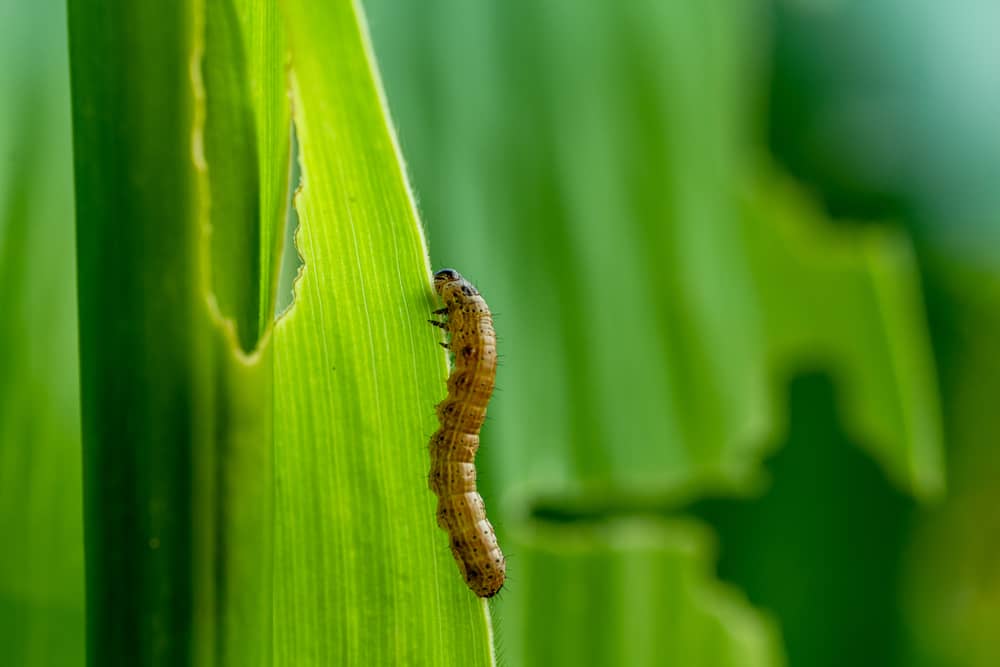
Fall armyworms are very common in South Carolina and North Carolina. These pests can cause significant damage to your home lawn and garden if left untreated. Fall armyworms received their name due to traveling in large groups and eating everything in their path. In this blog, we will discuss the life cycles of these pests, some preventative steps to avoid an infestation, and how to treat fall armyworm infestations.
How to control an infestation of fall armyworms
Fall Armyworm Life Cycle
Fall armyworms can live throughout the spring, summer, and fall months, but during the colder winter months, they will not usually survive. In the Carolinas, infestations of fall armyworms can begin as early as May, but the damage caused by fall armyworms is most severe in the months of August and September.
Egg
Fall armyworms start out as eggs and female moths can lay as many as 1,500 eggs during their lifespan. Eggs typically in warmer climates will hatch in just a couple of days. The most common places for moths to lay their eggs are on the underside of leaves, although in highly populated areas of fall armyworms they may lay eggs anywhere. Fall armyworm eggs are very tiny and are 0.4mm in diameter and 0.3mm in height.
Larva
Insects go through various stages within the larva stage. Each stage is usually referred to as an instar. During the larva stage fall armyworms will go through six different instars. During each instar their appearance will vary as well as their size. At the end of the larva stage, the fall armyworms will turn into a mature caterpillar roughly 1.5 – 2” long. During this caterpillar instar armyworms are the most destructive and have mouths in which they can bite on your grass. The larva stage lasts anywhere from 15 – 30 days.
Pupa
The larvae will then make their way underground in which they will build a cocoon and stay beneath the ground. They will emerge as moths and the final stage of their life cycle after spending anywhere from 7 to 37 days underground.
Adults
After they emerge as adults in the form of moths, they will survive for about 10 days, but up to 21 days. During the early stages females will lay their eggs and prepare for the next round of fall armyworms. Adults prefer warmer, more humid weather and can potentially survive in this climate.
Preventative Strategies
Fall armyworms can be hard to prevent, but general best practices for the prevention of fall armyworms include reducing thatch build-up and maintaining a healthy and thriving lawn. A healthy lawn can withstand minor infestations of fall armyworms without the need to use curative treatments and chemicals. Fall armyworms feed and will live within your thatch layer, so preventing thatch build-up is a great way to prevent armyworms. Additionally, fall armyworms tend to prefer turf that is dry and warm, so ensuring your lawn is properly watered in the summer is also a helpful tip. To help reduce thatch and to ensure you have a healthy lawn we recommend aerating your lawn annually and add about ¼” of compost to your lawn to add organic materials to your lawn. We offer Soil Science which is our branded version of compost that offers a large supply of nutrients that can help promote healthy growth in your lawn.
Curative Treatments
There are many effective treatments that can counteract a fall armyworm infestation. A very effective chemical is 0-0-7 Acelepryn. As a fertilizer and insecticide combined, 0-0-7 Acelepryn is ideal for those applications where insect control is desired, but high levels of nutrients are not. Acelepryn controls white grubs, fall armyworms and other insects of both surface and subsurface feeders. This combination of products saves time and labor by treating multiple insects with one simple application.
